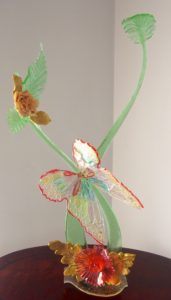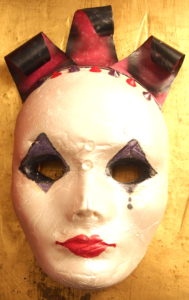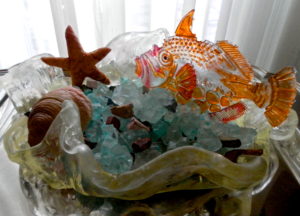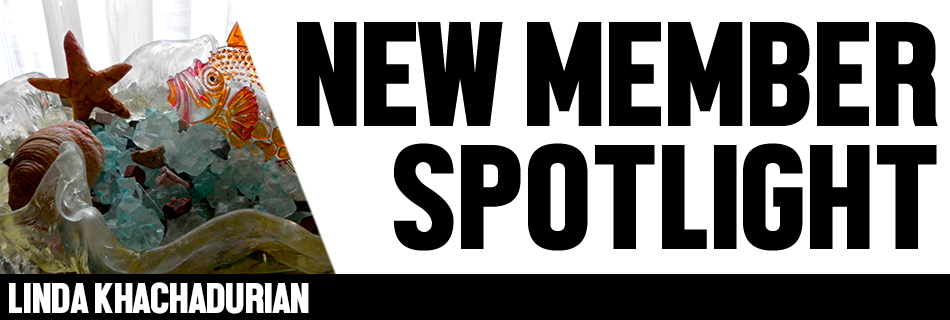Linda Khachadurian

Spring Awakening, isomalt.
What are your earliest memories of being artistic? I’ve been an arts & crafts geek my entire life!
When did art become a pursuit? Very recently; just in the past year.
Are you self-taught or formally educated in visual art? I studied sculpting in the clay medium in my youth as a hobby, but I’m self-taught in the edible mediums.
In what other ways are you involved in the local art community? I teach edible art and sugar sculpture classes at Cambridge Center for Adult Education, Boston Center for Adult Education, and New York Cake Design Lab. I also had an interactive art display at Cambridge Art Council’s Open Studios event in September, and will occasionally do blowtorch sugar art demos at local festivals.

il Paglicacco, sugar paste.
What medium do you currently work in and how did you choose this medium? I work in four edible mediums–isomalt (a compound disaccharide derived from sugar beets), sugar paste, chocolate, and potato starch paper. I also have started mixing edible with non-edible components, such as doing a watercolor painting on canvas, then affixing a 3-d isomalt bird. I recently finished a piece that was comprised of edible spray paint on canvas, a flower made out of silk and potato starch paper that had messages typed on the petals with edible ink, and isomalt leaves.
What is you creative process? Where are you finding ideas for your art these days? I don’t really have a process. Ideas just sprout in my head constantly.
How do you choose your subject matter? Is there a reoccurring theme that carries throughout your work? I partner with the wonderful nonprofit, Pure Water for the World, to whom I give 5% of all art sale proceeds. Thus, I tend to gravitate toward topics involving the issue of safe water.
For example, my isomalt sculpture, Priorities: 64/292, which was on display over the summer at University Place Gallery, referenced the United Nations resolution of that name that recognizes safe water as a basic human right. The priorities for misappropriating humanitarian funds meant for the people (I was thinking specifically of the February protests regarding the Venezuelan funds), and thus depriving them of basic necessities such as potable water.
What is one of your artistic goals? One of my artistic missions has been for people to broaden their viewpoints regarding what constitutes exhibit-able art, and blur the divide between visual and culinary arts. Several years ago, I wrote a piece for the Harvard Review of Latin America that was, in part, about making art out of recycled garbage in Haiti. When I wrote the article, this medium was already an accepted one. I thought that in my lifetime it must have once been considered an odd concept, although I couldn’t quite remember because it all seemed so logical and clever now. It’s human nature to accept that which is familiar. That’s what i hope to do by putting the sugar sculptures and paintings in the galleries–to get people accustomed to seeing such a medium in such a location.

Tranquility, isomalt & sugar paste.
What’s your favorite place to see art? The Frick and Whitney in NYC and The Royal Academy of Arts and Victoria & Albert in London.
What living artists are you inspired by? I’m inspired more by nature and events/topical issues than by other artists.
Do you own any art by other artists? I do! I have quite a collection of art from talented, unknown artists that I’ve collected from various countries to which I’ve traveled. I have everything from paintings from Haitian street artists to a 550 pound hand-carved wooden elephant by a Thai sculptor.
Do you have any shows coming up? Yes, Art Dash at the Beacon Gallery in Boston in December.
See more of Linda here:
http://www.chipperconfections.com
